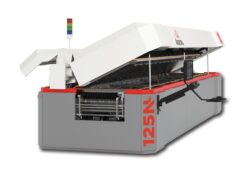Isolation in DC/DC converters has many different uses besides just protection against electric shock. This article explains the various grades of isolation and how they are implemented in typical low-power DC/DC converters.
Although DC/DC converters are available without input-output isolation, many use an internal transformer to electrically (galvanically) separate the output from the input. This makes DC/DC converters very versatile. Having outputs that are floating with respect to the input means ground loops can be broken to reduce noise in electrical systems, the output polarity can be freely chosen, and, of course, the isolation barrier can form an important safety element to prevent electric shock and to reduce other hazards caused by fault conditions.
Since the output is isolated from the input, the choice of the ‘zero’ reference voltage for the input or output side is also arbitrary. For example, an isolated DC/DC with 5V output can be used to change voltage level and polarity (e.g. +5V out from -48V in), add to an existing voltage (e.g. generate +20V from a +15V supply) or create a dual output from a single supply (e.g. ±5V from +5V). Figure 1 shows some possibilities.











